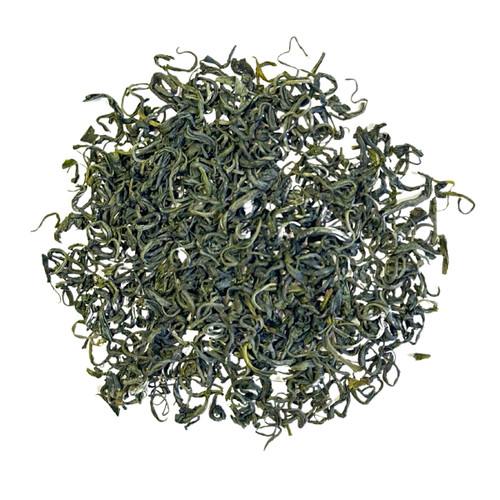Locally made spring teas in China embody tradition, terroir, and skill. In areas tea growing areas along the coaqstal mountains, traditions of how one grows and processes tea run deep. Cultivars from this area are famous and their flavors in high demand. Typically made only in small lots as the harvest progesses, these lots are not made for export and offer unique lot by lot flavors. You must travel there to find these teas.
Lot Notes. This lot is grown on a farm near Fuzhou on the coast of Fujian Province. Farm is family run, the garden is at an elevation of 600 meters. We tasted Pre-Qing Ming harvest teas with the farmer and made this selection for our new crop Green Monkey. Leaf is deep green with a delicately curled, playful leaf shape.
Tea Facts. Cultivar is Meizhan, an oolong with origins in the WuYi Mountains. Harvest date is July April 2025. Its consistent shape is key to its smooth, lightly sweet flavors. Made to local customs of taste and aroma. Made only in small lots, not for export.
Tasting Notes. Cultivar offers a smooth, lightly sweet taste, with a tension beneath suggesting its pungency. As it is a vigorous tea, we recommend a short steep. Taste is lightly vegetal and marbled, think fresh spring asparagus. Flavors linger in the finish.
Brewing Suggestions. Use 2 grams per 6-8 ounces of water at a temperature of 185 - 195 F. Steep for 1.5 to two minutes.
SKU: G-LGF-5
GREEN TEA
3 grams/1 teaspoon per 6 ounces of water
170° - 195° F
2 Minutes
Full-leaf green teas will open to layered, delicate flavors. The freshly picked leaves are dehydrated to prevent oxidization and preserve their natural green color. Japanese green teas are steamed to preserve their fresh aromas and flavor notes. It is best if green tea is not brewed with boiling water.
Lower temperature water allows the leaves to steep slowly, preserving their natural sweetness. Green teas and yellow teas offer a gentle vegetal aroma. In the mouth, flavors range from spring asparagus and delicate notes of sorrel and raw vegetables to herbaceous and nutty.

